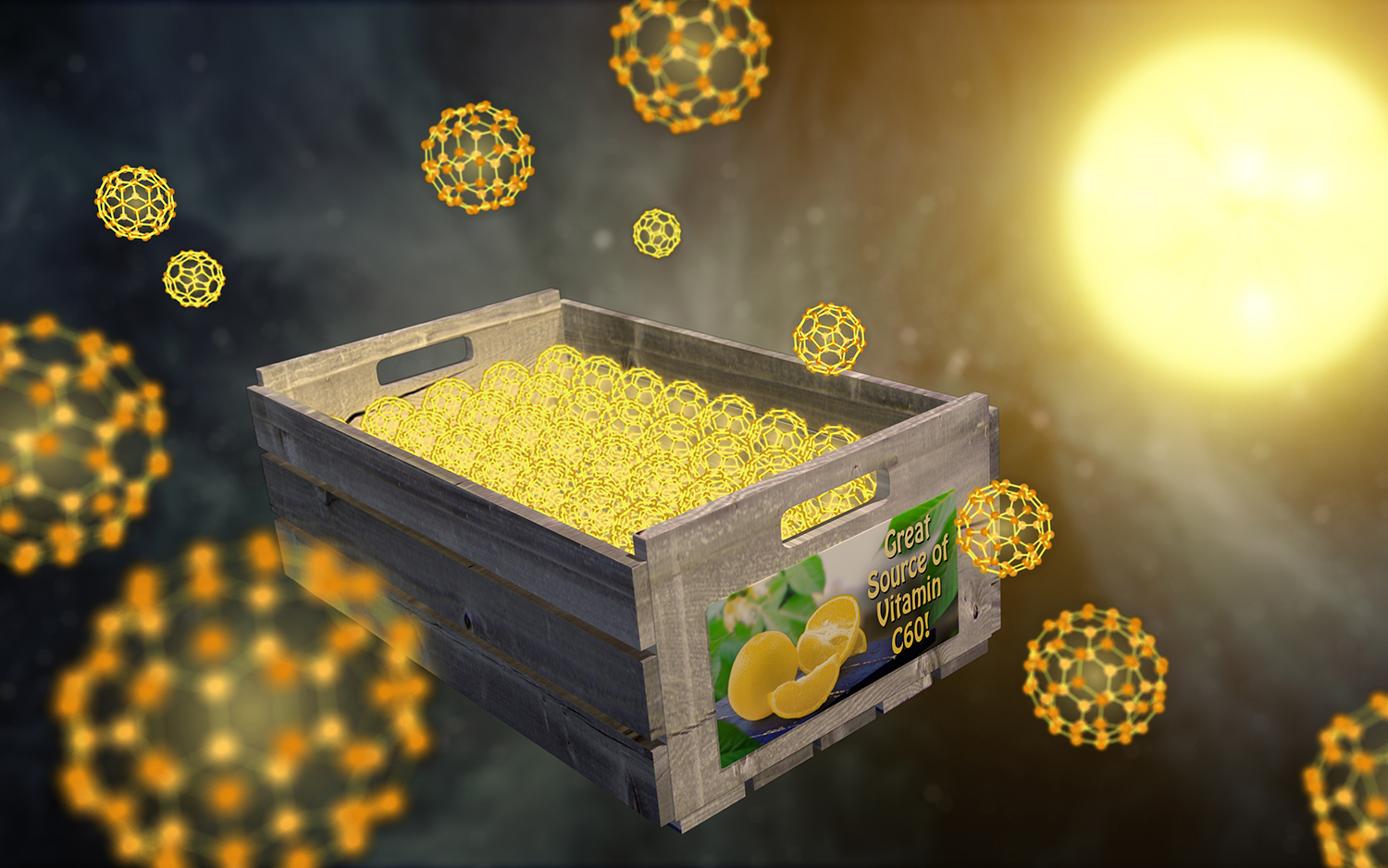Hubble Spots Giant 'Buckyballs' Jiggling Like Jell-O in Space

The Hubble Space Telescope recently spied new evidence of a peculiar molecule: wiggly buckyballs, which have intrigued astrophysicists since they were discovered in space nearly a decade ago.
Dubbed Buckminsterfullerene, these supersize molecules are made of 60 carbon atoms linked together in pentagons and hexagons to form a hollow sphere. The shape of these structures is much like a soccer ball, or like the geodesic domes designed by 20th-century architect Richard Buckminster Fuller (the inspiration for the molecule's name).
Buckyballs were first spotted in space in the form of a gas in 2010, and then as particles in 2012. And now, Hubble has spotted the first evidence of charged buckyballs hiding in the thin plumes of gas and dust that drift between stars, known as the interstellar medium, scientists reported in a new study. [Spaced Out! 101 Astronomy Images That Will Blow Your Mind]
Buckyballs — the largest known molecules in space — exist on Earth in forms that are created synthetically. These molecular giants also appear naturally, as a gas emitted by burning candles and as solids in certain kinds of rock, NASA previously reported.
Buckyballs also wiggle and jiggle "like jello," with 174 different vibration patterns, according to NASA.
Prior observations of space buckyballs with the Spitzer Space Telescope has identified the molecules in a variety of cosmic environments and in quantities comparable to the mass of 10,000 Mount Everests.
Adrift in space
The new study, published online April 22 in The Astrophysical Journal Letters, details how scientists turned to Hubble observations from 2016 to 1018, to learn more about buckyballs. Hubble captured bands of light emitted by 11 stars; the researchers then scanned the spectra — many wavelengths of energy produced by the stars — as the starlight passed through the interstellar medium's diffusing clouds. A new scanning technique called Space Telescope Imaging Spectrograph (STIS) produced a higher signal-to-noise ratio in the spectra than Hubble usually records, offering a clearer picture of molecules that might be lurking in deep space, the study authors reported.
Get the world’s most fascinating discoveries delivered straight to your inbox.
The researchers scanned light wavelengths from seven stars that appeared to be red due to the diffusion through the interstellar medium, and four stars that did not appear as red. In the spectra of the reddish stars, light absorption signatures suggested that buckyballs were present in the interstellar medium that the starlight passed through.
The scientists called their findings "a conclusive confirmation" of buckyballs in the space between stars, according to the study.
Their discovery demonstrates that regions of space where ultraviolet radiation is high and matter is thinly distributed — such as the interstellar medium — can support much larger carbon-bearing molecules than previously thought, the researchers reported.
Future observations of buckyballs, combined with laboratory and theoretical studies, will unveil how these unusual molecules interact with stars and other objects in space, and could uncover these molecules potential to serve "as probes of interstellar physics and chemistry," the scientists wrote.
- 11 Fascinating Facts About Our Milky Way Galaxy
- The Biggest Unsolved Mysteries in Physics
- 8 Ways You Can See Einstein's Theory of Relativity in Real Life
Originally published on Live Science.

Mindy Weisberger is a science journalist and author of "Rise of the Zombie Bugs: The Surprising Science of Parasitic Mind-Control" (Hopkins Press). She formerly edited for Scholastic and was a channel editor and senior writer for Live Science. She has reported on general science, covering climate change, paleontology, biology and space. Mindy studied film at Columbia University; prior to LS, she produced, wrote and directed media for the American Museum of Natural History in NYC. Her videos about dinosaurs, astrophysics, biodiversity and evolution appear in museums and science centers worldwide, earning awards such as the CINE Golden Eagle and the Communicator Award of Excellence. Her writing has also appeared in Scientific American, The Washington Post, How It Works Magazine and CNN.



